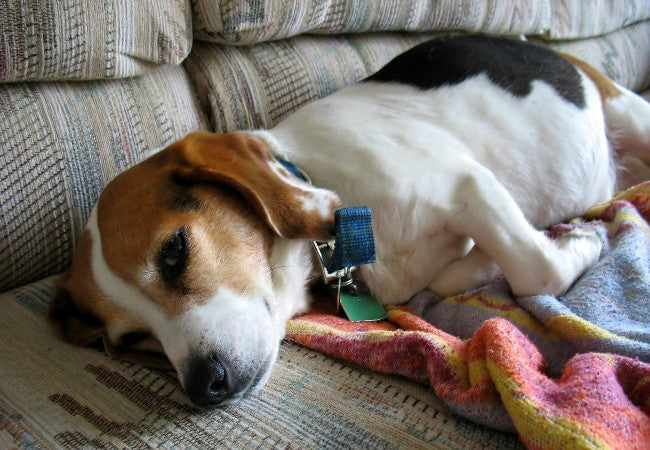Vet’s 2025 Guide to Gallbladder Mucocele in Dogs – Diagnosis, Treatment & Prevention 🐶

In this article
Vet’s 2025 Guide to Gallbladder Mucocele in Dogs – Diagnosis, Treatment & Prevention 🐶
By Dr. Duncan Houston BVSc
💡 What Is a Gallbladder Mucocele?
A gallbladder mucocele occurs when thick, mucus‑laden bile accumulates in the gallbladder, forming a rubbery “sludge” that can obstruct bile flow. This can lead to gallbladder distention, ischemia, and even rupture if not treated promptly.
⚠️ Who Is at Risk?
- Often middle‑aged to older dogs (median ~9 yrs)
- Breed predispositions: Miniature Schnauzers, Shetland Sheepdogs, Cocker Spaniels, Dachshunds
- Endocrine/metabolic conditions: Cushing's, hypothyroidism, diabetes, hyperlipidemia
🔍 How It Develops
Gallbladder dysmotility or bile duct obstruction causes bile stasis, inflaming the gallbladder and promoting mucus overproduction. Over time, bile thickens until sludge builds up—this thick mucus is non‑gravity‑dependent and may extend into bile ducts.
🩻 Ultrasound “Kiwi Sign” & Diagnosis
Ultrasound is the gold standard. A classic “stellate” or “kiwi‑fruit” appearance—echogenic bile central with striations peripherally—is highly indicative. Also look for:
- Non‑gravity‑dependent sludge
- Distended gallbladder, thickened wall
- Free abdominal fluid or discontinuous wall—suggesting rupture/peritonitis
🩺 Clinical Signs
- Vomiting, anorexia, lethargy
- Abdominal pain or distension
- Jaundice, diarrhea, fever
- Sometimes asymptomatic—it may appear incidentally
🧪 Diagnostic Workup
- Physical exam: check for pain, fever, jaundice
- Bloodwork: CBC, chemistry panel (liver enzymes, bilirubin), urinalysis
- Ultrasound: confirm mucocele, assess wall integrity, and fluid
- Bile culture & liver biopsy during surgery or via imaging-guided sampling
🚑 Treatment Options
1. Surgical Cholecystectomy
The gold standard—removal of the gallbladder. Offers best long‑term outcomes; short‑term mortality ~22–40%, but most dogs do well long term. Post-op survival ratios: 80–96% beyond 6 months.
Potential intraoperative steps: bile duct flushing, liver sampling. If rupture occurs, abdominal lavage and drains may be required.
2. Medical Management
Only for clinically stable or incidentally detected cases. Includes:
- Ursodeoxycholic acid (ursodiol) to improve bile flow
- Antibiotics for 4–8 weeks based on culture
- Hepatoprotectants and a low‑fat diet
- Reassessment with ultrasound every 3–6 months
Success rates are good—90% survive ≥1 year; surgical cases ~80% survive ≥1 year.
📉 Prognosis
- Post-surgery: long-term survival is excellent if dogs survive initial two weeks
- Medical vs surgical survival is similar in uncomplicated cases
- Concurrent pancreatitis or bile peritonitis worsens the prognosis
🛡️ Prevention & Management
- Screen high‑risk breeds and endocrine disease patients with ultrasound
- Manage concurrent conditions: hypothyroidism, Cushing's, hyperlipidemia
- Follow-up imaging every 3–6 months for incidental cases
- Consult ASAP with Ask A Vet telehealth if your dog shows signs!
📲 Vet Toolkit Highlights
- Ask A Vet – 24/7 vet access for evaluation and monitoring 📱
🌟 Real-World Case
Case Summary: A 9‑year‑old Miniature Schnauzer with Cushing’s was incidentally found to have a kiwi‑pattern mucocele. Surgery was performed before rupture; after two weeks of monitoring and a low‑fat diet, the dog returned to normal life—no recurrence at one-year checkup! 🎯🐾
✅ Key Takeaways
- Identify high-risk dogs: age, breed, endocrine conditions
- Ultrasound is essential—look for kiwi/stella signs
- Surgery remains the gold standard; medical care is an option for mild cases
- Prognosis is favorable with prompt diagnosis and treatment
- Stay proactive—regular screening and Ask A Vet support are key 💡
📥 Need Immediate Support?
Download the Ask A Vet app for telehealth support, urgent triage, and peace of mind. Visit AskAVet.com to learn more and get started 🐾🩺






